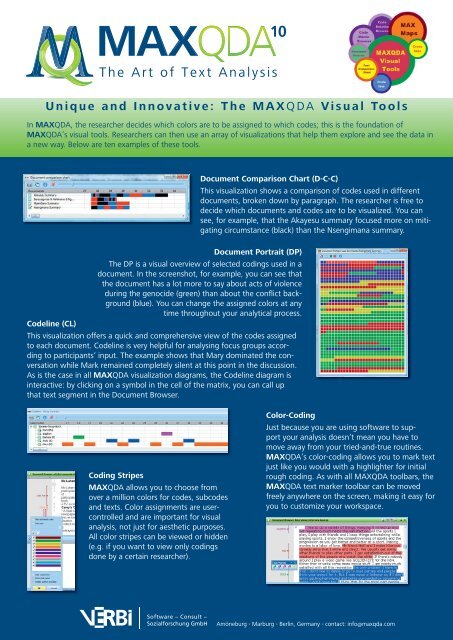

- MAXQDA VISUAL PORTRAIT ALL BLACK DOTS HOW TO
- MAXQDA VISUAL PORTRAIT ALL BLACK DOTS FULL
- MAXQDA VISUAL PORTRAIT ALL BLACK DOTS CODE
Distances can therefore only be compared within a map, not between different maps./p>Ĭolor: Cluster / Document System / Uniform – Specifies how the documents are to be assigned a color: The grid works with a fixed distance of 100 pixels. Grid – Turns on and off a grid, as known from a real map, to better estimate the relative distances between codes. Size Reflects Number – The more analyzed codes have been assigned in the document, the larger the circle will be symbolizing that document.įont Size Reflects Number – The more analyzed codes have been assigned in the document, the larger the font of the document’s name. Number of Codes – Displays in brackets after the document name how many of the selected codes occur in the document. Alternatively, select the Save Documents in this Cluster as a Set option to not only activate the documents, but to compile them into a new set in the “Document System” window. This allows you to perform analyses that only take into account the documents in this cluster. Right-click on a document and select Activate Documents in this Cluster to select only the documents of the clicked color in the “Document System”.The map will then regenerate itself with the remaining documents. Right-click a document and choose Remove to delete it from the map.Hover your cursor over a document name or icon: A tooltip will appear displaying which of the selected codes have been assigned in this document.Click on a document to select it in the “Document System”.In brackets behind this option, you can see how many documents are affected and therefore not visible on the map. Missing values: Exclude Documents – Documents with at least one missing value for the selected variables are not placed on the map. Selecting this option usually only makes sense in the Frequency of Codes/Variable Values mode. Missing values: Set to 0 – The variable value is set to 0.
MAXQDA VISUAL PORTRAIT ALL BLACK DOTS HOW TO
If the variant “Occurrence of Codes/Variable Values” is selected, variables of the types “Text”, “Date” and “Boolean” can be selected.Īs there may be missing values for the selected documents in a document variable, you have the option of choosing between two alternatives as to how to proceed in this case: If the calculation mode “Frequency of Codes/Variable Values” is selected in the Start tab, variables of the types “Integer” and “Decimal” can be selected. Taking variable values into accountīy clicking on the Start > Select Variables icon, you can select document variables to be taken into account when determining the similarity between documents, in addition or as an alternative to codes.
MAXQDA VISUAL PORTRAIT ALL BLACK DOTS FULL
The corresponding documents are listed in full when you move your mouse cursor over them. Please note: When several documents are located in the same place because they were coded identically with regard to the currently selected analysis mode, the number of documents in this location is displayed instead of just one document. These are described in detail in the Similarity Analysis for Documents section.
MAXQDA VISUAL PORTRAIT ALL BLACK DOTS CODE
In the above example, Documents A and B would count as identical with regard to the code “Parents”, because the code was assigned in both cases – how often the code was assigned does not matter here.ĭepending on the selected calculation mode, different similarity or distance measures can be selected.

Occurrence of Codes/Variable Values – Only whether a code has been assigned to a document at all is taken into account. So if the code “Parents” was assigned twice to Document A and three times to Document B, this is considered a difference. Two different modes can be selected in the Start tab to determine the distances between the documents:įrequency of Codes/Variable Values – The frequency with which a code has been assigned in a document is taken into account. MAXQDA will now place all the selected documents on the map. Via Start > Select Codes, select the codes you want to take into account when determining the similarity between documents.In the Document Map window, under Start > Select Documents, select the documents you want to place on the map.An empty document map will appear with its own menu. Select Visual Tools > Document Map in the MAXQDA main menu.The Document Map is an ideal tool for visual grouping of cases (documents) and can serve as a basis for building typologies or more in-depth explorations of the identified groups.


 0 kommentar(er)
0 kommentar(er)
